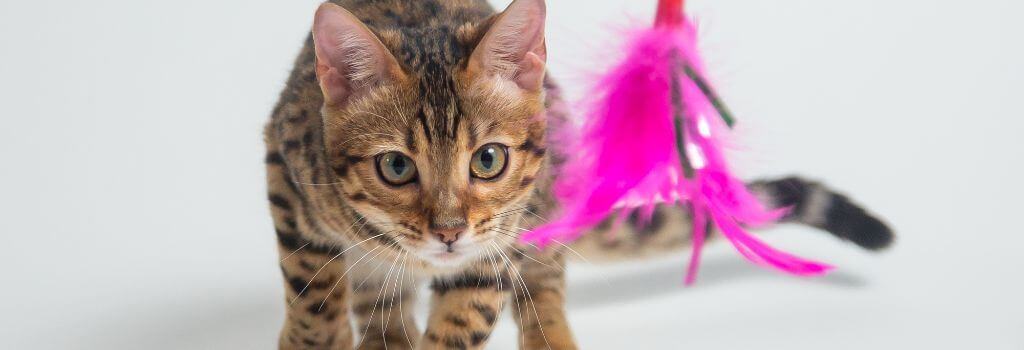Many people assume that cats lead exceptionally carefree lives, but the truth is they are surprisingly sensitive creatures. Stress and anxiety can affect cats more than we realize, often triggered by subtle changes in their environment or routine. Simple things such as adapting to unknown scents, new people or pets in (or out of) the house, changing the location of their resources (food, water, litter, box), or changes in the neighborhood can have an effect on a cat's stress level and the instances of cat anxiety.
Adding to these environmental differences, cats also tend to mirror their pet parent’s emotions, meaning your stress or schedule shifts can directly impact their behavior and emotional well-being. Understanding these triggers is the first step in helping your cat feel secure and at ease.
How to Help a Cat With Anxiety
While some medications can help stabilize a cat's mood, their effectiveness can vary greatly from one cat to another. This unpredictability makes medication challenging and sometimes frustrating for some pet parents. Administering medication to cats can also be a bit tricky because many cats resist pills or liquid medications, making the process stressful for both the pet and the owner. Studies show that most cats benefit from a combination approach, where medication is paired with other interventions to achieve the best results. This need for a multi-faceted strategy can feel overwhelming at first, but it offers a more holistic way to address anxiety and stress.
Fortunately, medication isn’t the only solution! There are several other steps you can take to reduce stress in your home and support your cat’s emotional health.
1. Using Purina ProPlan Calming Care Supplements
Supplements with calming effects are a great option for owners dealing with issues related to cat anxiety and stress. Purina’s Calming Care is a patented probiotic that has been shown to decrease nervous behaviors, promote positive behaviors, blunt cortisol response, and support a healthy immune system.
Results are not immediate and can take up to 6 weeks to see results, but pet owners who stayed consistent with their use have reported great results and favorable changes in their cat’s overall behavior and demeanor.
2. Trying Feliway Calming Pheromone
If it seems like your cat is exhibiting signs of stress, you can try calming pheromones to help them relax and take on cat anxiety at the source. Research has estimated that approximately 50% of domestic cats may experience some form of emotional disorder – with many of those cases featuring cat anxiety as a major contributing factor.
Pheromones are like secret messages that comfort and reassure cats and kittens and reduce signs of stress. The effectiveness of pheromones on cats has been confirmed via numerous scientific studies and has become increasingly popular with the owners of anxious cats due to the availability of pheromones to the average consumer, as well as their ease of use and application.
3. Keeping a Routine
Cats are creatures of habit, so maintaining a normal routine is very important for decreasing not just their stress and anxiety, but also yours!
Creating a routine that is beneficial to managing cat anxiety and stress includes sticking to normal bedtime, wake time, and meal schedules. This is because you are meeting your cat’s needs in a predictable way, that doesn’t leave them on edge waiting for their next meal or time to rest. This structure in a cat’s routine also taps into their natural instincts of a hunting and resting cycle, allowing them to feel a sense of security that can lessen feelings of anxiety.

4. Scheduling Play Time
When setting your cat’s routine, don’t forget about playtime. Having structured playtime is important for maintaining the overall health and wellbeing of your cat. It gives them an outlet to release pent-up energy and strengthens the bond between you and your feline which can be used in your favor when dealing with stress and anxiety. Developing a strong bond with your cat can be anxiety reducing in itself, as when you are strongly bonded, your presence can act as a calming influence on your cat, leaving them feeling more relaxed and less stressed.
Use this time to introduce new interactive toys, such as laser pointers, feather toys, and balls for fetch, which aren’t just physically stimulating, but also great options for mental enrichment.
5. Doing Yoga Together
One creative way to interact with a cat that is exhibiting cat anxiety symptoms is to do yoga together. Cats are very inquisitive creatures. The second you hit the mat your cat will be right there to work on her cat pose, probably while making biscuits on the yoga mat out of joy. While it might be distracting at first, studies show that pets can decrease stress levels in humans, so it’s a win-win for both of you!
6. Practicing Litter box etiquette
Maintaining proper litter box hygiene is crucial for decreasing stress in cats. Cats are very clean animals and like their bathrooms to be well maintained – so be sure to keep things as tidy and sanitary as possible.
One common mistake cat owners make when it comes to litterboxes is not having enough of them in their household. The general rule for the number of boxes in the house is one box per cat, plus one. Also make sure that there is at least one box on each level of the house. Litter boxes should be scooped at least once per day and thoroughly cleaned at least weekly to reduce odor, build-up of byproducts and maintain cleanliness.
7. Providing Access to Fresh Water
While cats don’t always love taking baths, they do love water. Having access to multiple sources of fresh water encourages appropriate fluid intake and stimulates their curiosity.
For adult cats, it is generally recommended that they consume four ounces of water per five pounds of body weight each day in order to maintain adequate hydration. As we discussed above, having readily available and predictable resources can help cats feel more relaxed and decrease stress and anxiety from resource scarcity.
8. Ensuring Your Cat Has Plenty Of Alone Time
Cats like being alone and they like their quiet time. Which is why it is important to respect their space. If at all possible, allow an area of the house that is only accessible to your cat. Provide them with places to hide, climb or play where they won’t be interrupted.
Many cat trees can be a good source of enrichment because they allow normal scratching behavior, climbing and usually have a cubby for your cat to hide in. Even empty cardboard boxes or paper shopping bags can provide a safe haven for cats.

9. Providing Multiple Scratching Posts
Scratching is a cat's normal self-soothing behavior and it is even more necessary for cats that experience elevated stress responses. Provide multiple surface types and angles to be sure your cat always has a safe outlet for stress.
Working with Your Veterinarian to Treat Cat Anxiety and Manage Stress
Managing stress and anxiety in cats requires patience and a combination of strategies, but the rewards are well worth it. From using supplements and pheromones to maintaining a consistent routine and providing opportunities for enrichment, these steps will help reduce your cat’s anxiety and continue to strengthen your bond.
While these techniques work for a number of cats, remember, every cat is unique — what works for one may not work for another, so stay attentive to your cat’s needs and preferences and consider working with your veterinarian to manage any lingering cat anxiety symptoms better. With time, care, and a little creativity, you can help your cat blossom and lead them to a stress-free life.
If you have questions and you'd like to reach out to us, you can call us directly at (503) 968-2911, or you can email us at [email protected]. Don't forget to follow us on social media Facebook, Instagram.
